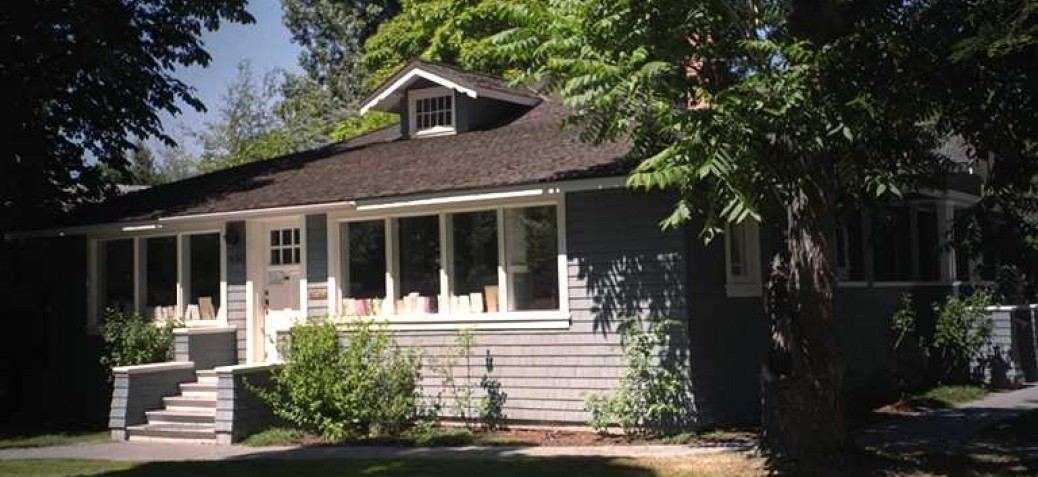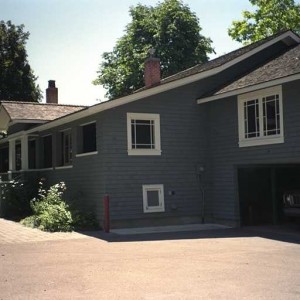W.R. Foster House
Place Description
The W.R. Foster House is a one-storey wood-frame shingle Craftsman bungalow, located at the corner of Cadder Avenue and Pandosy Street in Kelowna's historic Abbott Street neighbourhood. It is screened from the road by a white picket fence and a mix of medium height shrubbery and mature deciduous and coniferous trees, and set back from the edges of the property on a manicured lawn.
Heritage Value
The W.R. Foster House is of heritage value for its early twentieth century architecture. Originally built in 1921, it is a good post-First World War example of a Craftsman bungalow residence. The most popular housing style between 1910 and 1930, the Craftsman style was typified by rational space planning, the use of natural materials and a mix of traditional design elements inspired by the Arts and Crafts movement. Originally modest in size but expanded through later additions, this bungalow is an example of the popular pattern book homes constructed at the time, or a direct interpretation of such a design.
Additionally, the W.R. Foster House is valued for its association with families who contributed to the economic and social development of Kelowna. It was built for William Rowell Foster (1879-1961), superintendent of the real estate department of Okanagan Loan and Investment Trust. In the 1930s, Foster worked a fruit grower until his retirement in 1938. By 1948, the house was owned by Julian Monteith, president of Kelowna Builder's Supply Ltd., President of the Board of Trade and Chair of the Hospital Board.
Character Defining Elements
Key elements that define the heritage character of the W.R. Foster House include its:
- corner location on a large lot;
- residential form, scale and massing as expressed by its one-storey height and rectangular plan;
- hipped roof with gabled dormer, clad with cedar shingles;
- concrete foundation and wood-frame construction;
- Craftsman elements such as its a small gabled entry with paired columns, and projecting eaves with decorative scroll-cut bargeboards;
- additional external elements such as the original wooden doors with glazing and hardware, and two red brick chimneys (one external and one internal);
- regular and asymmetrical fenestration such as double-hung 6-over-1 wooden-sash windows, casement windows, and multi-paned stationary windows with decorative muntins; and
- associated landscape features such as the grassed lawn and mature trees.





